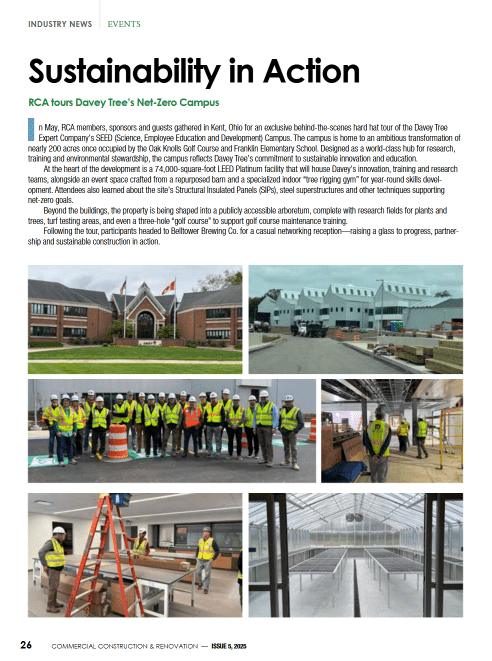
Fleetio ASE Scholarships Aim to Curb Tech Turnover
In celebration of National Automotive Service Professionals Day, Fleetio, the leading fleet optimization platform, announced the recipients of its first Automotive Service Excellence (ASE) Scholarship program. Technicians play an essential role in maintaining high standards for the service industry, ensuring the safety, reliability and performance of the vehicles millions of people rely on every day. These scholarships were created to empower deserving students and automotive technicians, validating their skills and expertise against industry-defined standards.

Image Courtesy of: Fleetio, ASE
The fleet service industry is currently facing a 30–40% annual turnover rate. This poses a significant challenge for retaining skilled technicians, largely attributed to insufficient onboarding processes and a lack of structured, ongoing mentorship. To help close the growing talent gap, the ASE Scholarship Program directly invests in technician development, equipping them with the tools, resources and support needed to overcome broader industry hurdles. By enhancing earning potential and creating clear pathways for growth, the program helps technicians build lasting, rewarding careers in the automotive field.
The ASE Scholarship grand prize winner will receive a $3,000 scholarship to cover the registration and testing fees for three ASE professional-level Certification tests, plus funds for tool upgrades or other essential supplies. This comprehensive support promotes continued professional growth, underscoring the vital role skilled technicians play in driving the success and sustainability of the automotive industry.

Images Courtesy of: Fleetio, ASE
The 2025 Fleetio ASE Scholarship Grand Prize Winner is:
· Michael Hairston, Life Ride
“I am most honored to be a recipient of this scholarship and extend my sincere gratitude to Fleetio for their generous support of my continued education and professional development,” said Michael Hairston at Life Ride. “This financial assistance will be invaluable as I continue to advance my career as a maintenance technician at Life Ride.”
The ASE Scholarship runner-up winners will each receive a $1,000 scholarship to cover the registration and testing fees for three ASE professional-level Certification tests, plus funds for tool upgrades or other essential supplies.
The 2025 Fleetio ASE Scholarship Runner-ups are:
· Alex Palma, Quarry Management
· Andrew Cureton, AAA Oregon/Idaho
· Angel Gonzalez, General Pavement Management
· Chase Statter, Student Nominee, redbox+ Dumpsters
· Katherine Daniel, St. Johns County School District
“We are proud to partner with Fleetio to support deserving technicians in earning their industry credentials and building their expertise,” said Dave Johnson, President/CEO at ASE. “Especially during a time where qualified technician shortages are impacting the fleet industry, we are grateful for Fleetio’s dedication to investing in technician development.”
For more details about the ASE scholarship, visit www.fleetio.com/lp/ase-scholarship
About Fleetio
Fleetio is the leading fleet optimization platform, helping fleets, repair shops and partners efficiently manage their assets by providing resources to gain control of daily operations while planning for the future. The company supports over 1 million vehicles on its platform, including more than 7,500 fleets across 100+ countries, and processes over 13 million repair orders through a network of 110,000 repair shops. Designed with data-driven recommendations and expert insights, Fleetio is setting the industry standard with its extensive fleet maintenance and management ecosystem. Fleetio equips fleet professionals with the tools they need to extend asset life, reduce downtime and confidently deliver results for their business. Learn more at www.fleetio.com.
About the National Institute for Automotive Service Excellence (ASE)
Established in 1972 as a non-profit organization, the National Institute for Automotive Service Excellence (ASE) is a driving force in the transportation industry. As an independent third party, ASE upholds and promotes high standards of service and repair through the assessment, certification and credentialing of current and future industry professionals, and the prestigious ASE Blue Seal logo identifies professionals who possess the essential knowledge and skills to perform with excellence. Today, there are approximately 220,000 ASE Certified professionals at work in dealerships, independent shops, collision repair shops, auto parts stores, fleets, schools and colleges throughout the country. For more information about ASE, visit www.ase.com.
Feature Image Courtesy of: Fleetio , ASE
How to Start a Business Blog: Step-by-Step Marketing Guide
In the digital age, content is king. Businesses of all sizes are finding that blogging is one of the most powerful tools to engage with customers, drive traffic to their websites, and establish their brand authority. If you’re looking to take your marketing strategy to

Gainesville Native Serves with Navy Info Warriors of Tomorrow
Those serving at Information Warfare Training Command (IWTC) Corry Station learn the importance of information warfare as part of modern warfare. One of the sailors continuing the tradition of maritime superiority through information warfare is Seaman Gavin Jones, a native of Gainesville, Georgia. Jones is
Eco-Friendly, Code-Compliant Commercial Waste Guide
When tackling a commercial construction or renovation project, it’s easy to focus on the build itself. Design details, timelines, and materials tend to take center stage. But one critical piece often gets overlooked until it’s too late: what to do with all the waste. How

Cintec Dome of the Capitol Building Restoration Project
The History Construction of El Capitolio (the Capitol Building of Puerto Rico) began in 1925 in the neighborhood now known as “Old San Juan”. The building contains two chambers, with the Senate on one side, the House of Representatives on the other, and an array
How Crypto Loans Are Changing Financing in Capital-Intensive Industries
In industries like commercial construction, large upfront investments in materials, equipment, and labor are a daily reality. Managing cash flow efficiently while keeping projects on schedule is a constant challenge. Recently, crypto loans have emerged as an innovative financial tool that offers businesses a new

METALCON Announces 2025 Top Product Awards
METALCON, the premier global event for the metal construction and design industry, announces its Fifth Annual Top Product Awards, honoring the most innovative products, technologies and solutions shaping the future of the industry. METALCON exhibitors are invited to submit nominations across 15 product categories, showcasing their most
How Synthetic Turf Is Shaping the Future of Urban Greenspaces
Urban green spaces are becoming increasingly vital in today’s rapidly expanding cities. As more people move into dense metropolitan areas, access to parks, recreational areas, and greenery significantly impacts the quality of life. However, maintaining these green spaces comes with challenges—water scarcity, high maintenance costs,

MVE + Partners Wins Multiple Gold Nugget Awards
MVE + Partners, a leading architecture, design and planning firm, swept their categories last night in Anaheim, Calif. at the sold-out Pacific Coast Builders’ Conference (PCBC) Gold Nugget Awards, the nation’s oldest design award for innovative architecture, planning and construction, for two distinctive projects. MVE
The Future of Commercial Cleaning: Top Innovations for 2025
In today’s fast-paced business environment, maintaining a clean and healthy workspace is more important than ever. Companies seeking top-tier hygiene standards are turning to precision commercial cleaning services to meet these demands. As we move further into 2025, the commercial cleaning industry is evolving rapidly,
Hispanic Construction Alliance Names First Board Members
The National Hispanic Construction Alliance (NHCA), a trade association powered by the National Association of Hispanic Real Estate Professionals (NAHREP®) and dedicated to empowering the Hispanic Community in the construction industry, today announces the installation of its inaugural National Board of Directors. This marks a pivotal milestone in NHCA’s
Read more BELOW
HITT Contracting sponsors JK Community Farm’s Play Zone
HITT Contracting, a top-ranked national general contractor based in Northern Virginia, has become a major partner in supporting the educational and hunger relief efforts of the JK Community Farm, a 150-acre nonprofit farm in Loudoun County that grows and donates healthy food to food banks across the



































